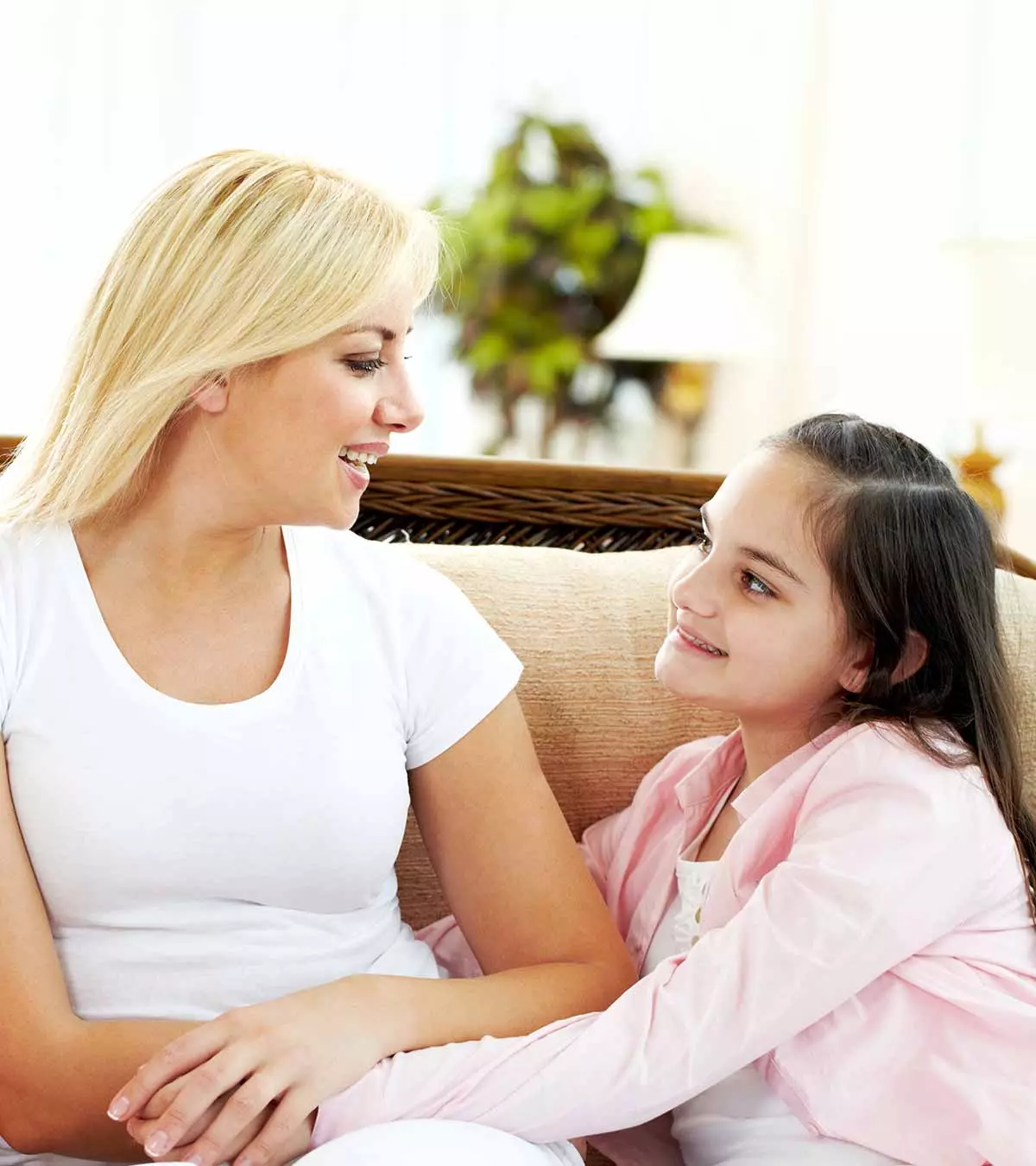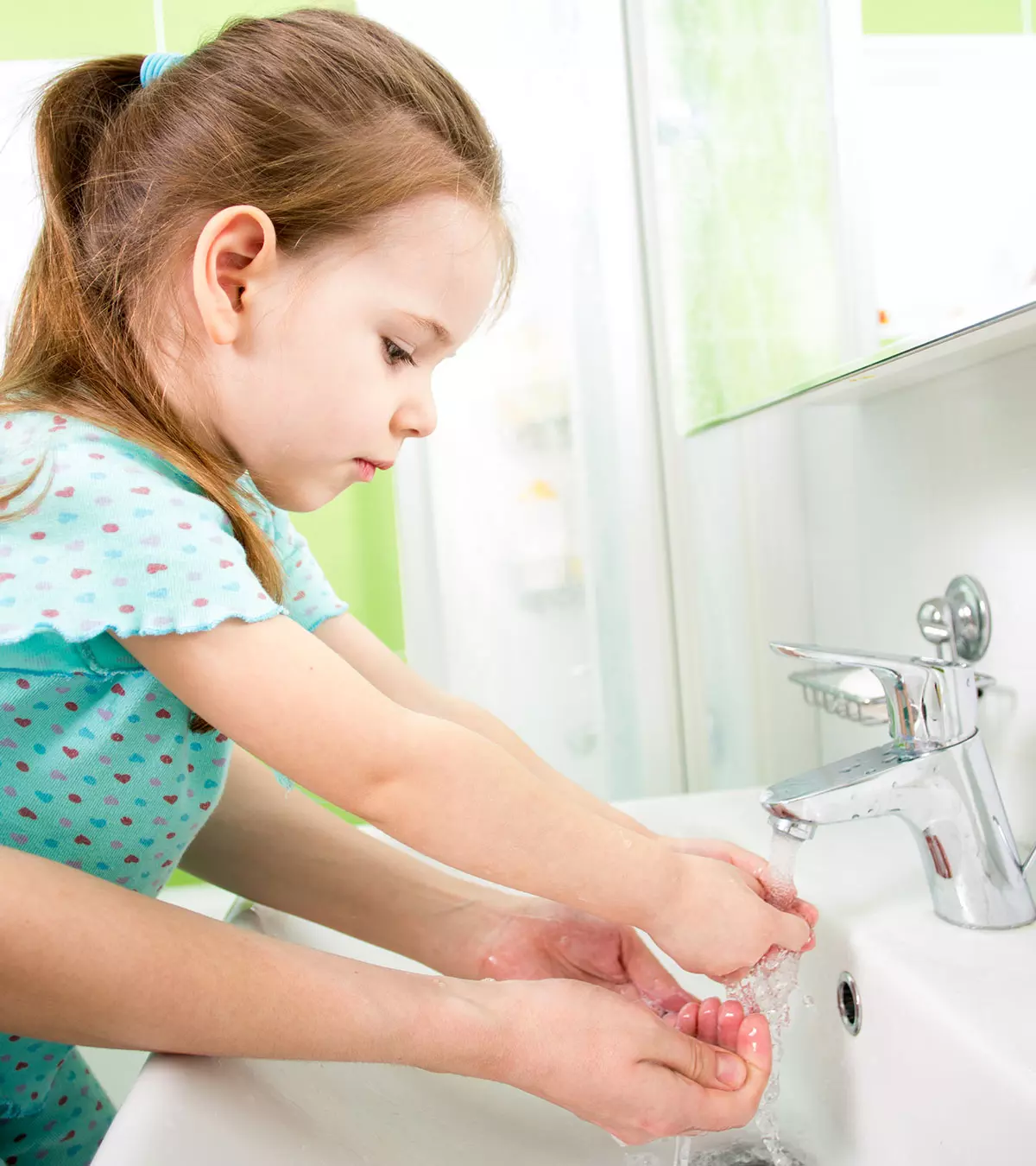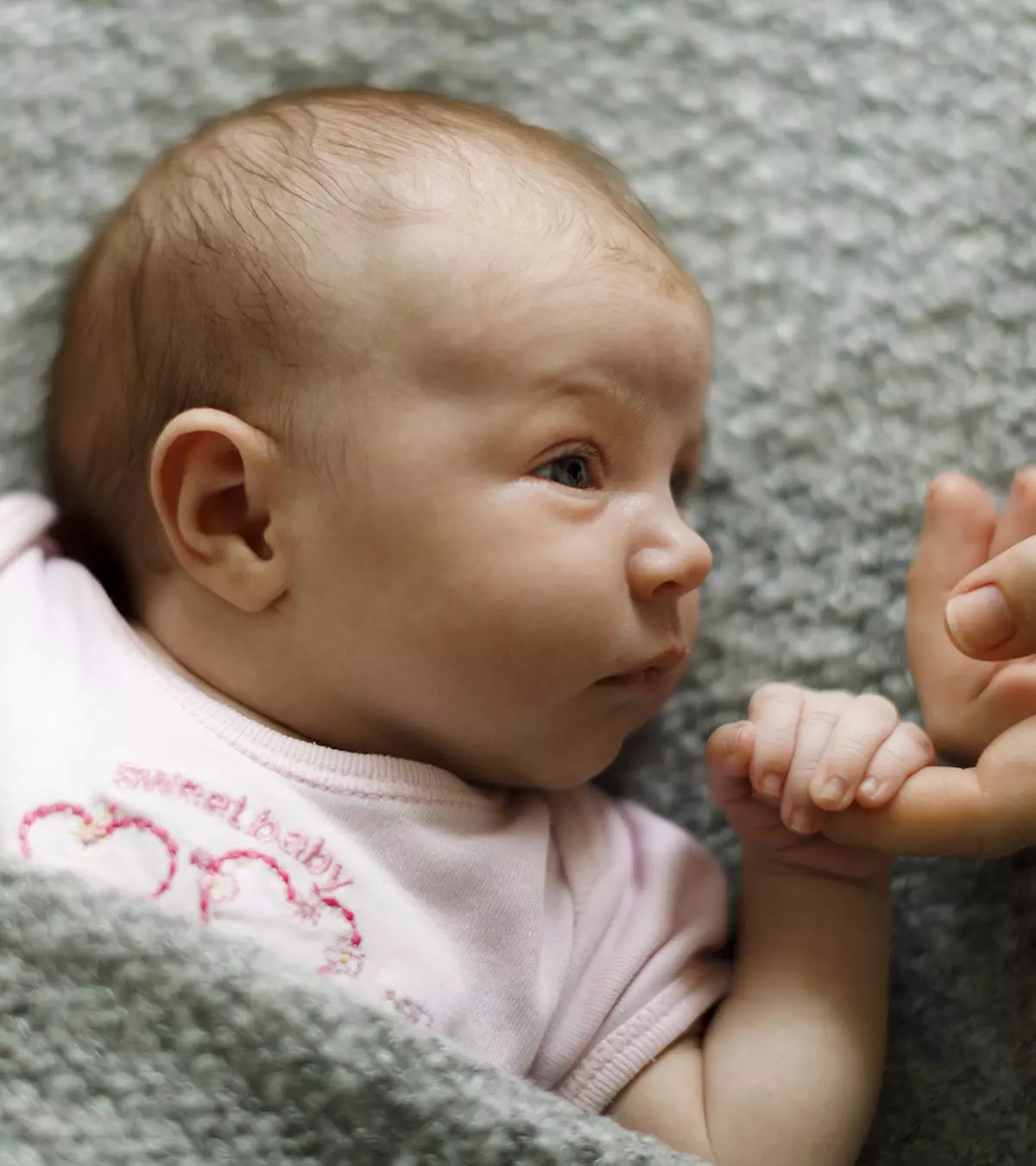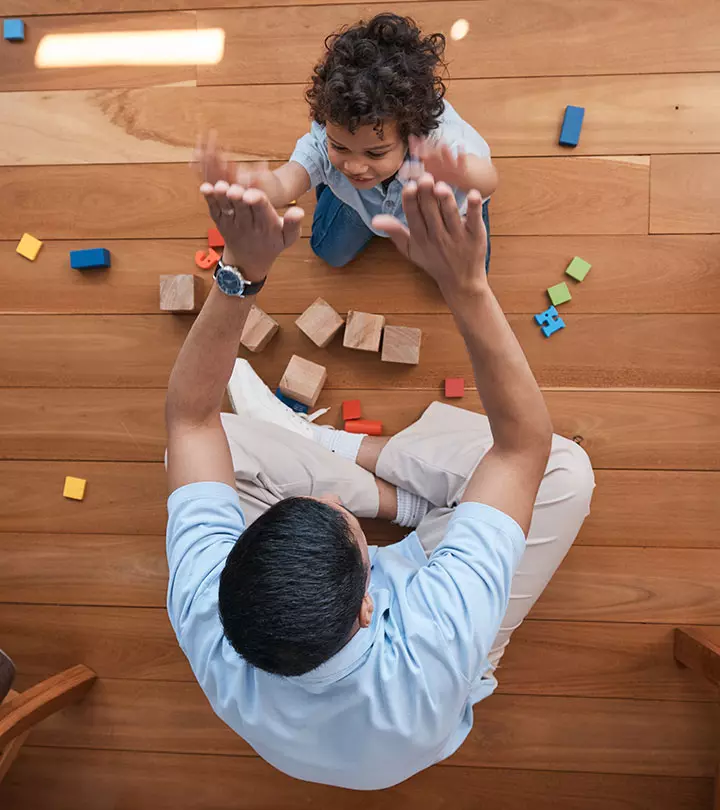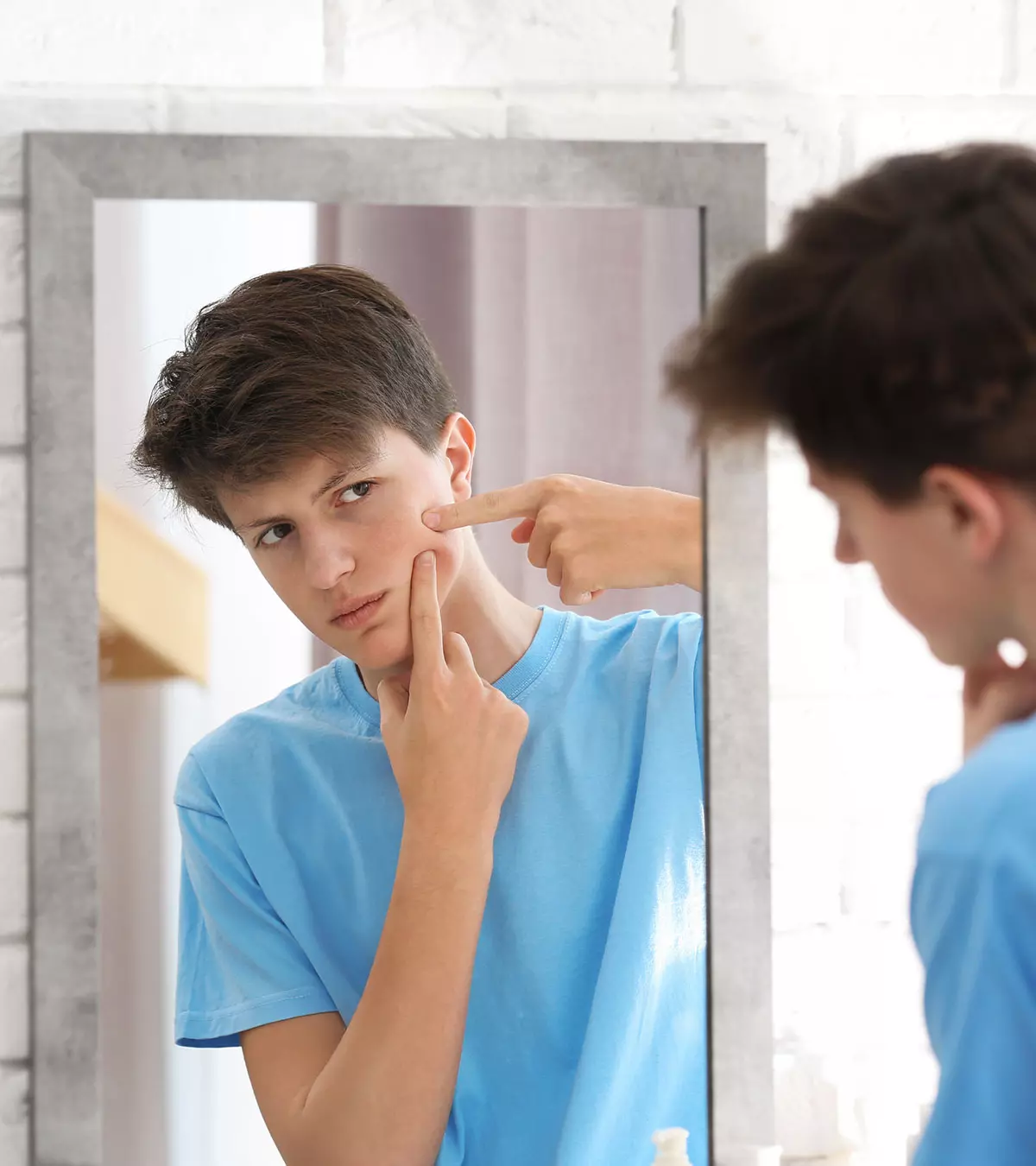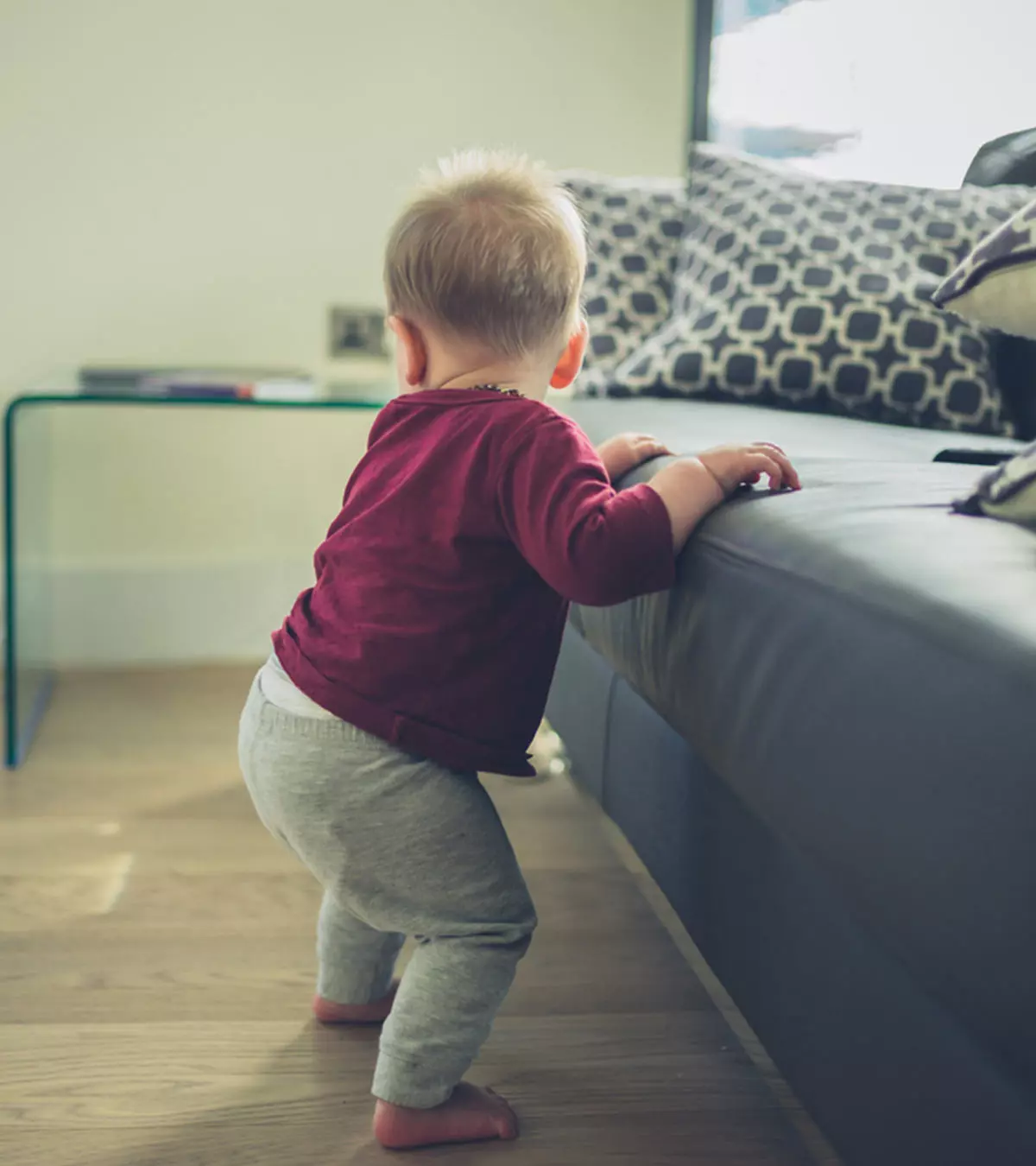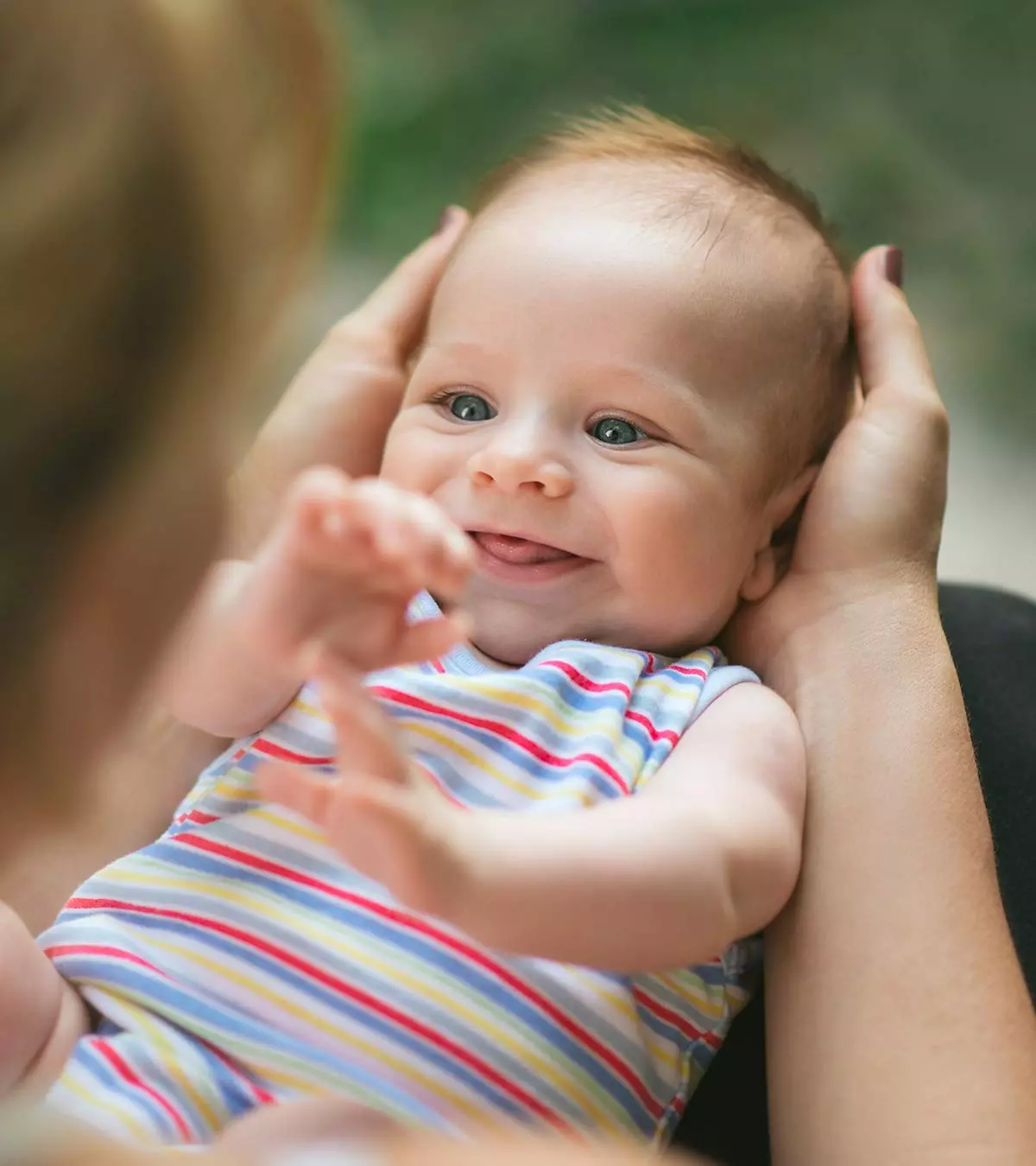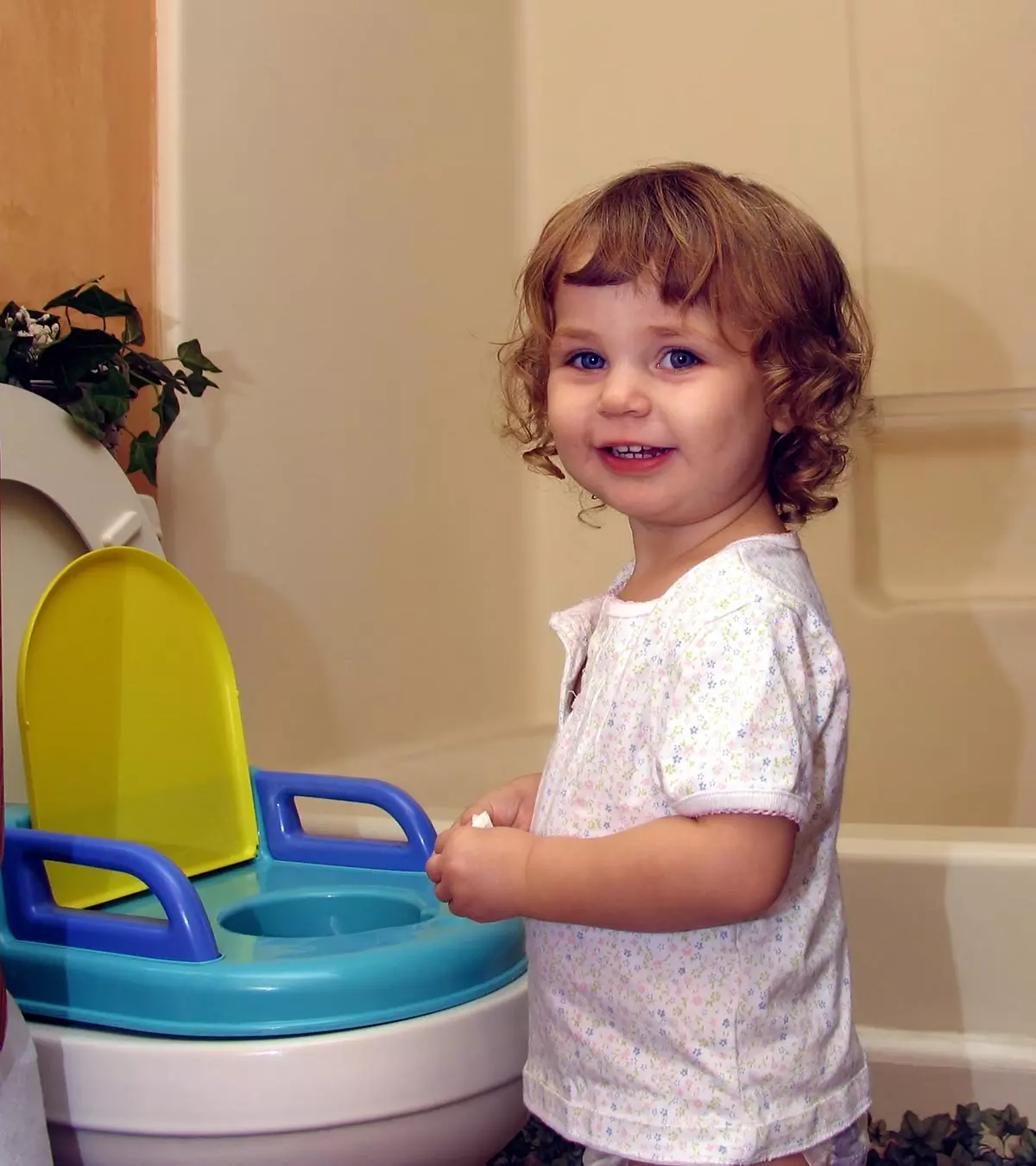
Potty training takes time and patience, and you should do all you can to help your child feel comfortable and confident. All children learn to use the toilet sooner or later. While some children learn it earlier, the timing differs for each child. So, we have compiled some tips on how to potty train a three-year-old. Moreover, you may want to know when to start potty training your child. So, read this post to learn more about the signs your child is ready to get potty trained, tips on potty training, and things to remember while potty training your child.
Key Pointers
- Potty training can be challenging, but following some precautions and tips can help make the process easier.
- Consistency and positive reinforcement are key to achieving the desired goal faster.
- It is essential not to force or pressurize the child if they don’t show signs of readiness.
- If the child shows disinterest or has accidents, parents should maintain patience and avoid losing their calm.
- Potty training pants, training seats, books, toys, and proper leg support can help make the transition faster and smoother.
When Can You Start Potty Training Your Child?
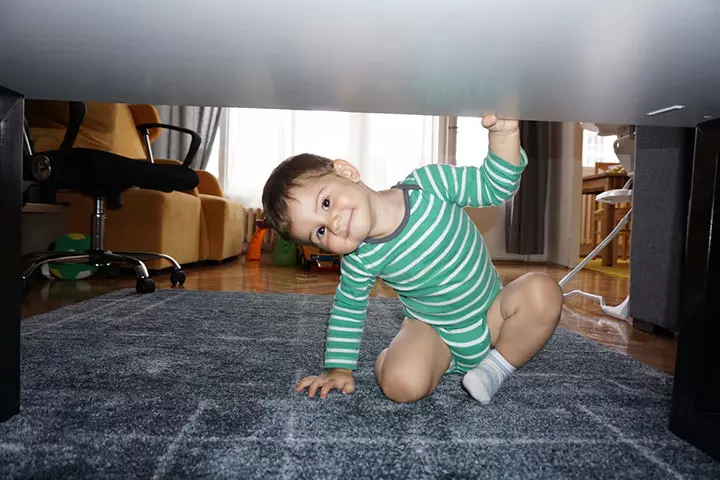
Children are usually ready to be potty-trained by the age of 18-24 months (1). A toddler at this age will exhibit signs of readiness, like showing displeasure when their diapers are soiled and signaling their parents to change the diapers.
Older toddlers often become self-conscious about pooping or peeing in front of others. This could lead to toddlers holding poop and getting fussy. If they begin to go to a separate room or hide under a table while pooping, then they are probably ready to start potty training (2).
Potty training needs time and patience. It is suggested to start potty training for your child when you have enough time on hand. The American Academy of Pediatricians (AAP) suggests a child-oriented approach and recommends beginning the process only when the child is ready (3). The academy’s potty training model takes into consideration the following parameters.
- Physiologic maturation: When the child has the ability to sit, walk, dress, and undress.
- External feedback: When the child can understand and respond to simple instructions.
- Internal feedback: When the child develops self-esteem and motivation, the desire to imitate and identify with elders, self-determination, and independence.
Each child achieves the above milestones at a different age. Therefore, it is essential to spot the various indicators that suggest the child is ready.
Signs That a Toddler Is Ready For Potty Training
One or more of the following behavioral changes can indicate that the toddler is ready to be potty-trained (4) (5).
- Your toddler learns to put things where they belong.
- They understand a few simple commands.
- They have developed enough independence to say or express “NO.”
- Your toddler is capable of remaining dry for a few hours.
- They begin to exhibit interest in toilet training, or bathroom habits by following you to the toilet, etc.
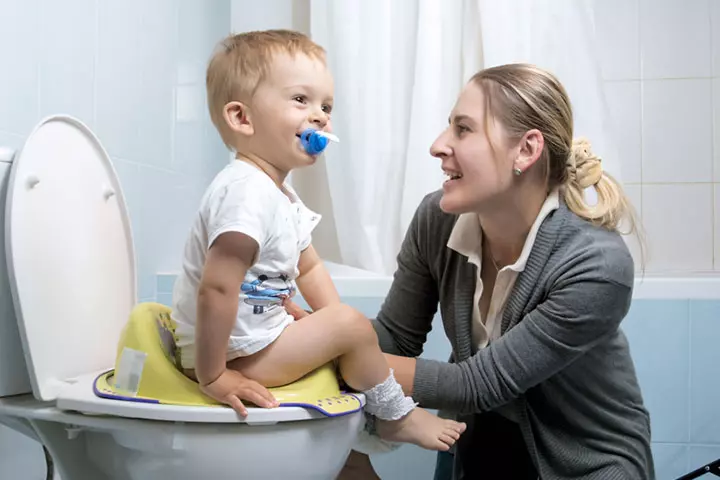
- Your toddler can walk and sit down by himself/herself.
- The child indicates to a parent or a caregiver that they soiled.
- The toddler has learned how to pull the clothes on and off by himself/herself.
A toddler could display many of the above behaviors, but might still not be ready for potty training. Do not rush into it just because another child of the same age is already potty-trained. The process involves patience, communication, encouragement and following the right steps.
 Point to consider
Point to considerIf parents begin toilet training their children before they are ready for the new milestone, children may take time to learn the skill or face prolonged toileting problems (5).
How To Potty-Train A Three-Year-Old Child?
There is no single approach to potty training, and parents can follow their very own method. You can pick a process that works best for your child. Here are some general steps and methods to help get your child potty-trained (5) (6).
- Tell them repeatedly that they need to inform you when they want to pee or poop.
- Take your child along to buy underwear or training pants and let them pick it. Buy with a print of their favorite comic character, animal, or vehicle to encourage them to wear it.
Awilda, a mother of three, shares an effective tip she used to potty train her youngest child. She says, “First thing I did was buy panties from her favorite character – Dora. I showed her one panty and said, “You’re a big girl now, and I want you to wear big girl panties.” She was so excited to have her very own pair of Dora panties. She didn’t hesitate to put them on and prance around the house and show her two sisters (i).”
- Get a potty chair for the child. Most toddlers feel comfortable on the potty chair as their feet touch the ground, and there is no fear of falling.
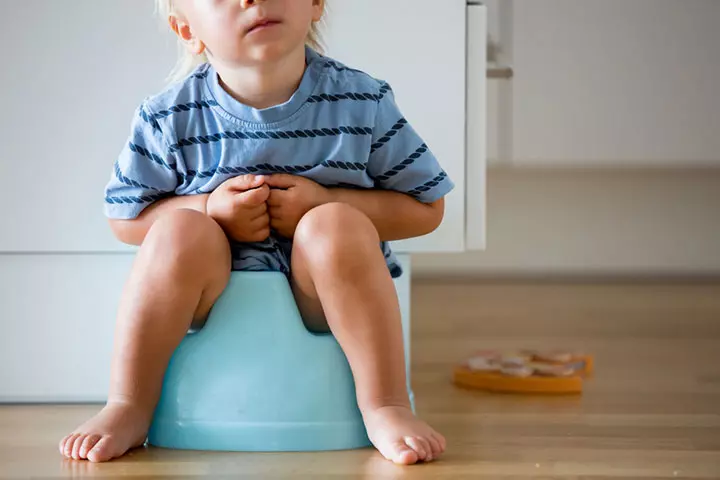
- Let the child explore the potty seat by observing or touching it. Buy the potty seat of your child’s favorite color. You can take your child along to shop for the potty seat and let him/her choose one.
- Begin with emptying the contents of a soiled diaper into the toddler’s potty seat in his/her presence. It will help you reinforce the toddler that potty is where the child’s ‘pee’ and ‘poo’ belong.
- Initially, let them sit on the potty seat with their clothes put on. It will help them get familiar with the potty seat. Let them get up whenever they want to.
- You can use a toy or have an older sibling demonstrate sitting on the potty seat. It will increase interest.
- Once they are comfortable with the feel of the potty seat, remove their pants and make them sit on the potty chair. Give them a toy or a book to keep them engaged.
- Do not scold or punish them if they are not able to pass urine or stool while on the potty seat. Encourage them by saying that they can do it next time.
- Offer small rewards or treats to make potty training more fun and motivate your child to use the potty.
Tips To Potty-Train Your Three-Year-Old
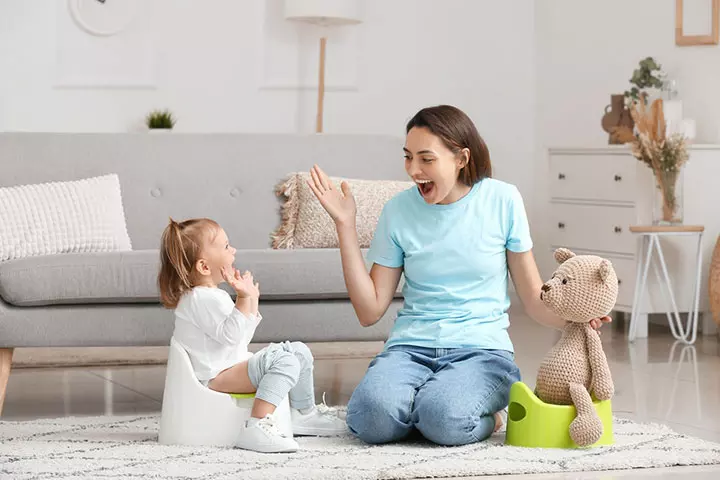
The following tips can help you in your efforts to potty-train your three-year-old (5) (7):
- Be prepared for the setbacks that might come. Do not conclude that your child got potty-trained if they have successful encounters a few times. Potty training is a long process, and children learn and unlearn. Do some progress tracking so that you know which steps to take next. There might be some accidents during the process. Reassure and encourage the toddler.
- Discuss the potty training plan with your spouse and the child’s caretaker. Different modes of potty training from different people might confuse the child. Let everybody use the same words for urine, stool, and body parts. This is called the ‘Rule of 1’ — one person, one routine, one word.
- Make the potty training encouraging and non-threatening. Do not scold your children if they fail to learn or if they have episodes of failure in between. Embarrassment can lead to loss of confidence in the child.
- Start gradually. Do not force them to use the potty seat at all times in a day. You can begin by making them use the seat once a day when they wake up in the morning.
- Keep the potty seat accessible to the child. You can place it in different parts of the house to make it more accessible.
- Give your children fiber-rich food and enough fluids to avoid constipation. Constipation might hinder the progress of potty training.
- Keep an eye on the posture or movements that your child makes while he/she is having a bladder or a bowel movement. When you can identify them, you encourage them to try it on the potty seat.
- Praise your child when they begin to convey their urge to pee or poop. Even if they can’t do it on the potty seat, appreciate them for trying.
- If the child wants to, let him or her press the flush by themselves.
- Do not use negative words like dirty or gross for the baby’s potty and urine.
- Do not pressurize them to be potty-trained.
 Quick tip
Quick tipJen, a mother and blogger, shares how she encouraged her 3-year-old son, Sam, to use the potty. She says, “We kept the house warm and Sam naked from the waist down, we stayed super close to home, and I just reminded him that when he had to go, the potty was there and I was ready to help. When he went, we danced, cheered, and highfived in celebration, then we’d dump the potty into the toilet and he would say goodbye and flush. (We really only had one accident in those early days, but when he did, we didn’t make a big fuss about it – we simply said, “Oops! We waited too long – next time we’ll get to the potty sooner”, and then cleaned it up and moved on. All things potty were kept light and positive). On day 2, things were going so well that I gave Sam the choice as to whether he’d like to do the school run in a diaper or in underwear, and he chose underwear!! In this case, I asked Sam to sit on the potty ‘just to try’ before helping him put his undies on and we brought the potty along with us in the car too. I let him know that we could stop any time he needed to go and I made sure to keep our trips as brief as possible (30 minutes max)…
“And on day 7, Sam went from being naked from the waist down to wearing underwear at home…I wanted to give him a good long run with being naked a) because it makes getting onto the potty and using it successfully so much easier (one less step!) and b) because I feel like wearing underwear must sort of feel like wearing a diaper, which of course has the potential to lead to accidents. Overall, I think the most important thing through the first week was keeping the process really positive and taking small steps forward when I felt like he was ready (ii).”
Things To Remember While Potty Training Your Child
Remember the following things while potty training your child.
- Girls take around three months less time than boys to get potty-trained (9).
- Boys should be initially taught to sit and pee. As they grow older, you can encourage peeing while standing.
- Children often convey the urge to pee sooner than they can convey the urge to poop.
- Achieving nighttime bladder control is much more difficult than achieving day-time bladder control (5).
- Set aside a good amount of your time to potty train your child.
- Do not attempt potty training your child when some major changes, such as shifting of house, or the birth of a sibling, are happening around the child.
- Disposable training pants are a good choice between diapers and underwear.
- Avoid overalls and jumpsuits for toddlers, who are trying to potty train themselves. Make them wear loose and comfortable clothes that they can pull down and pull up by themselves.
- A potty-trained child can also have some setbacks and accidents.
Every child gets potty-trained at a different age, which can even differ from their siblings. Most children get potty-trained by the time they are three years old (9). Some might take longer. According to the AAP, “Early initiation of intensive toilet training correlates with an earlier age at completion of toilet training but also a longer duration of toilet training. Although earlier toilet training is not associated with constipation, stool withholding, or stool toileting refusal, initiation of intensive training before 27 months does not correlate with earlier completion of toilet training, suggesting little benefit in beginning intensive training before 27 months of age in most children (10).”
Very rarely, children might have physical issues that make potty training more difficult (11). Do not hesitate to talk to your child’s doctor if you have a query regarding the inability to potty train your child or if the child begins to soil after being dry for quite some time.
 Point to consider
Point to considerHow To Get Your Toddler To Use The Toilet Instead Of The Potty?
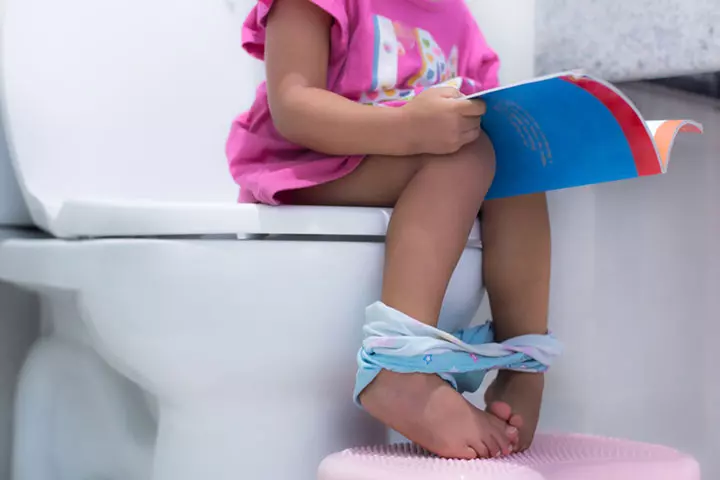
Toddlers usually prefer using potty seats instead of the adult toilet seats after they are potty-trained. The potty seat is more size appropriate, while the toilet seat might create the fear of falling. The following tips might help ease the transition to toilet seat once they grow up.
- Do not force the child to use the toilet seat. Take it easy and slowly build the child’s courage to use it.
- Buy the child a footstool to help him/her climb and sit on the toilet seat. It might give them the necessary leg support, and they would feel less scared.
- Initially, begin by asking them to sit on the covered toilet seat with the clothes on. It will help familiarize them with the feeling of sitting on an adult potty seat.
- Try and see if the baby is comfortable with training seats that fit over adult potty seats.
- Some toddlers might feel more confident in your presence, while others might prefer total privacy. Ask your child about their preference and do accordingly.
- Make the toilet session fun by giving them a book or a toy while they are in there.
How Do You Know When Your Child Is Fully Potty-trained?
A fully potty-trained child will be able to clearly convey when they want to pee and poop. They can pull their pants down, tuck their shirts, and independently use a familiar bathroom. However, they might need some assistance in unfamiliar or public bathrooms.
A child can be said to have developed primary bladder control when there is no involuntary leakage of urine during the day-time. Secondary bladder control is considered developed when the child consistently has no day-time involuntary urine leakage for three months (12).
Frequently Asked Questions
1. How often should I take my three-year-old to the potty during the day?
In the initial period, a three-year-old can be taken to the potty at 30 to 60-minute intervals throughout the day, which can gradually increase as the child grows. Another strategy is to focus on specific intervals of the day, such as meal times, waking up time, and bedtime. It will help build consistency in potty training (6).
2. What should I do if my child has accidents during potty training?
It is common for potty-trained children to feel guilty or embarrassed when accidents occur. Hence, it is important to handle the situation with understanding and patience. Avoid getting angry, scolding, beating, or discontinuing the potty training, as this may embarrass the child further. Instead, keep encouraging the child through continued practice using the potty, irrespective of the number of accidents they have. Talk to the child and try to help them understand and express their need to pee or poop. Offer encouragement every time the child stays dry for longer, convey the need to use the potty, and manage to use the potty on time (13).
3. How do I handle regression in potty training?
Potty training regression refers to a consistent increase in potty failure incidents each day after the child has been potty-trained. Its occurrence is not uncommon and can occur due to various reasons, such as changes in routine, stress, or an underlying medical issue. To handle this, first, ascertain the reason behind the regression with the help of a professional. Next, talk to the child about how they feel and prepare them to return to the basics. Paying adequate attention to their needs or feelings and regular potty training practice may help the child become independent again (14).
4. How do I handle nighttime potty training for my three-year-old?
Start nighttime potty training once the child has learned to use the potty during the day. To begin with, prepare for potty training and nighttime accidents by laying down mattress protectors on the child’s bed. Keep a spare set of bedsheets and clothes for changing when needed. Place the potty in a place accessible from the bed for the child to use when needed. Maintain a bedtime routine where they use the potty once before bed. Also, you may avoid using diapers at night and tell your child to wake you whenever they feel like peeing or pooping (15).
Potty training your child is not an easy task and can test your patience. However, you mustn’t give up during the process, and this list of tips will help you potty train your three-year-old effortlessly. Once they are potty trained, you can eventually shift them to the toilet seat. But do not force them to do it. Instead, let them take their time to adjust to it. Furthermore, being patient and persistent during the process and using potty training games for toddlers can help make this transition period easier for you and your child.
Infographic: Points To Remember While Potty Training A 3-Year-Old Child
While potty training can be challenging, with patience and a little guidance, it can also be a rewarding and fun experience for both parents and the child. So, check out the infographic below to learn about considerations you should keep in mind when potty training your three-year-old.
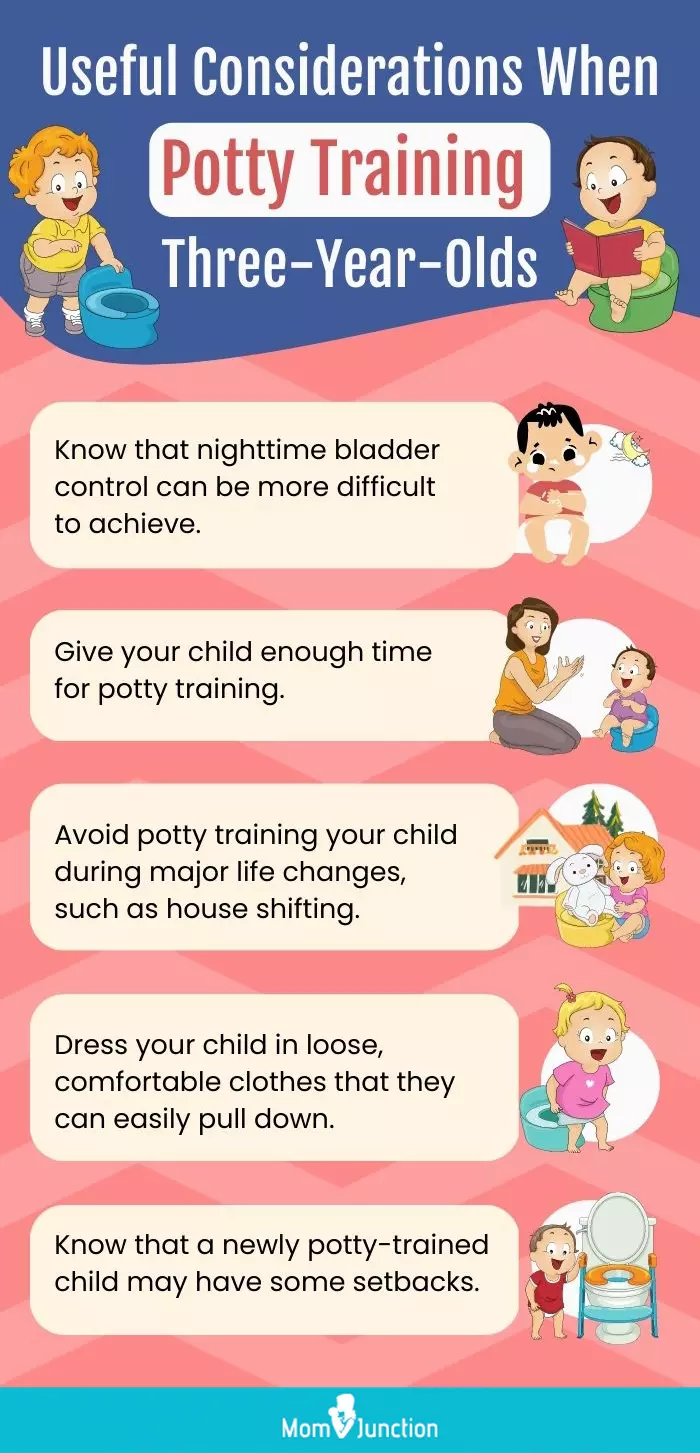
Illustration: Momjunction Design Team
Illustration: Helpful Tips To Potty Train Your 3-Year-Old

Image: Dall·E/MomJunction Design Team
Potty training can be a daunting task, but don’t worry! This video will help you avoid the 6 most common mistakes parents make. Learn the truth about potty training and get it right the first time!
Personal Experience: Source
MomJunction articles include first-hand experiences to provide you with better insights through real-life narratives. Here are the sources of personal accounts referenced in this article.
i. Potty Training my 3 year old…;https://hipncreative.wordpress.com/2010/07/30/potty-training-my-3-year-old/
ii. How We Potty Trained our 3-Year-Old;
https://mamapapabubba.com/2019/01/19/how-we-potty-trained-our-3-year-old/
References
- Toddler Development.
https://medlineplus.gov/toddlerdevelopment.html - All About Potty Training.
https://www.chhs.niu.edu/child-center/resources/articles/potty-training.shtml - Toilet Training Methods, Clinical Interventions, and Recommendations.
https://publications.aap.org/pediatrics/article-abstract/103/Supplement_3/1359/28229/Toilet-Training-Methods-Clinical-Interventions-and?redirectedFrom=fulltext - Toilet learning: Anticipatory guidance with a child-oriented approach.
https://pmc.ncbi.nlm.nih.gov/articles/PMC2819951/ - Toilet Training.
https://www.aafp.org/pubs/afp/issues/2008/1101/p1059.html - Five do’s and don’ts of potty training your toddler.
https://health.ucdavis.edu/children/patient-education/potty-training-children - Toilet Training (Potty Training).
https://www.chop.edu/primary-care/toilet-training - Toilet Training.
https://kidshealth.org/en/parents/toilet-teaching.html - Mia E Lang; (2008); Among healthy children, what toilet-training strategy is most effective and prevents fewer adverse events (stool withholding and dysfunctional voiding)?
https://pmc.ncbi.nlm.nih.gov/articles/PMC2529421/ - Relationship Between Age at Initiation of Toilet Training and Duration of Training: A Prospective Study.
https://publications.aap.org/pediatrics/article-abstract/111/4/810/63115/Relationship-Between-Age-at-Initiation-of-Toilet - Potty Training: Learning to the Use the Toilet.
https://www.zerotothree.org/resource/potty-training-learning-to-the-use-the-toilet - Toilet Training.
https://publications.aap.org/pediatricsinreview/article-abstract/20/7/240/53702/Toilet-Training?redirectedFrom=fulltext - Potty training problems.
https://www.nhs.uk/conditions/baby/babys-development/potty-training-and-bedwetting/potty-training-problems/ - Potty Training Regression: What To Do About It.
https://health.clevelandclinic.org/what-to-do-when-your-potty-trained-child-suddenly-isnt - Five signs your child is ready for potty training.
https://www.nct.org.uk/information/baby-toddler/caring-for-your-baby-or-toddler/five-signs-your-child-ready-for-potty-training
Community Experiences
Join the conversation and become a part of our nurturing community! Share your stories, experiences, and insights to connect with fellow parents.
Read full bio of Dr. Anuradha Bansal
Read full bio of Dr. Ritika Shah
Read full bio of Rohit Garoo
Read full bio of Anindita Ghatak










